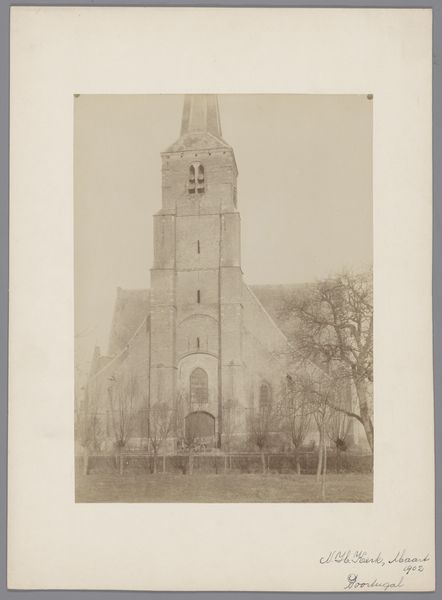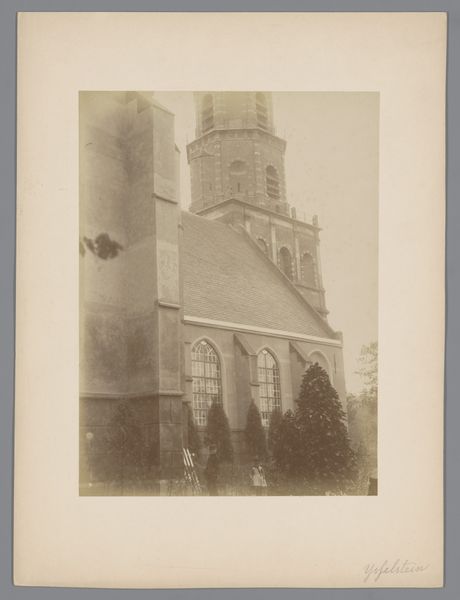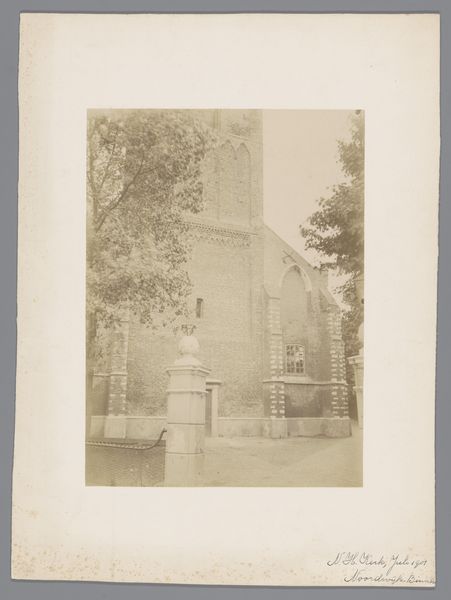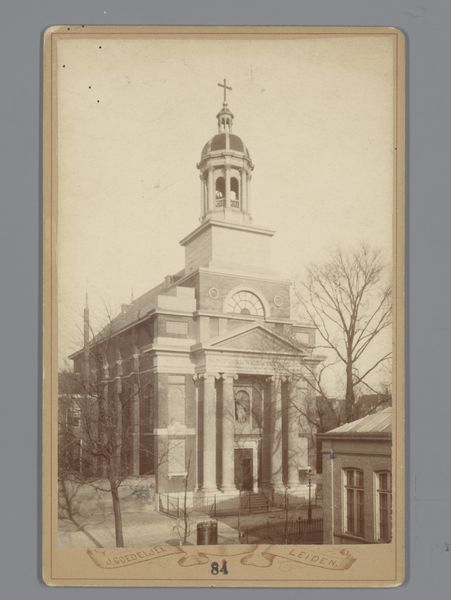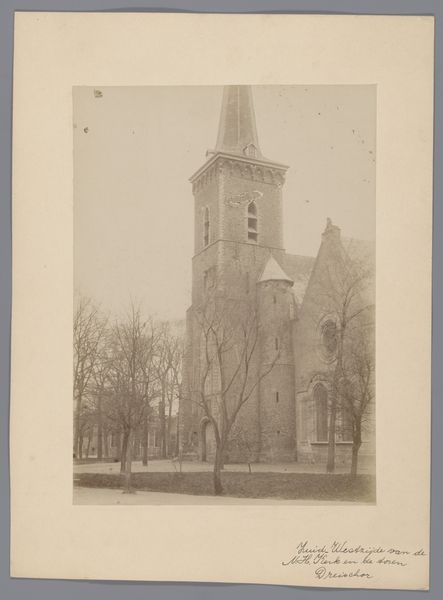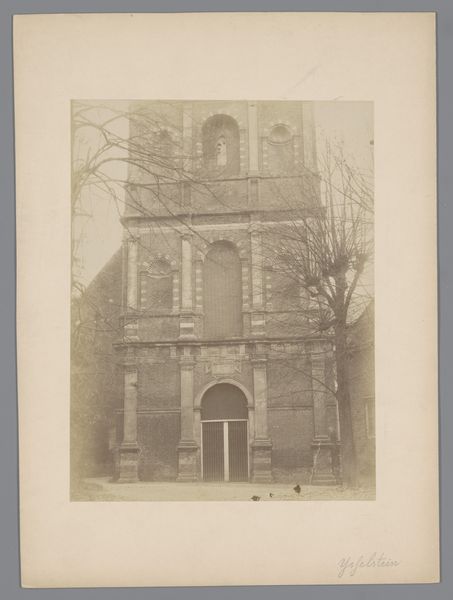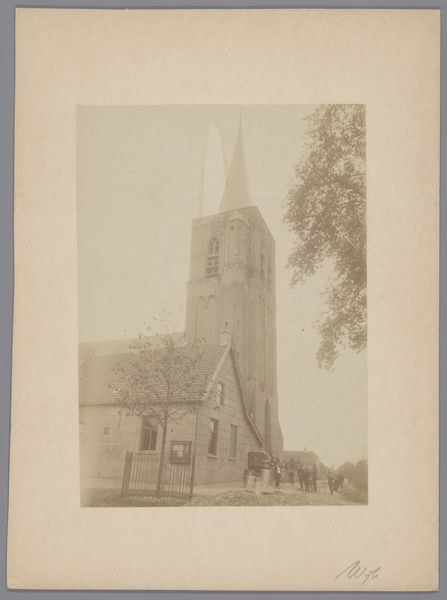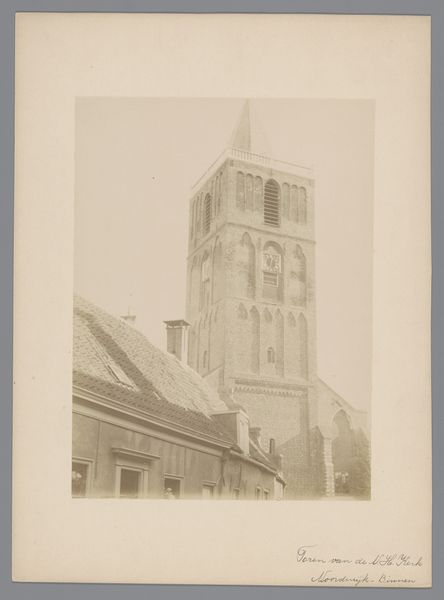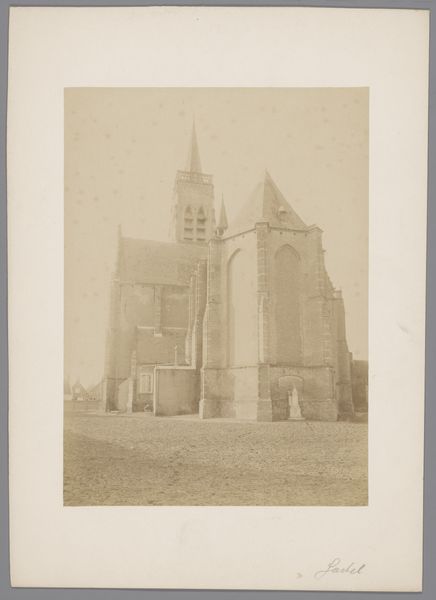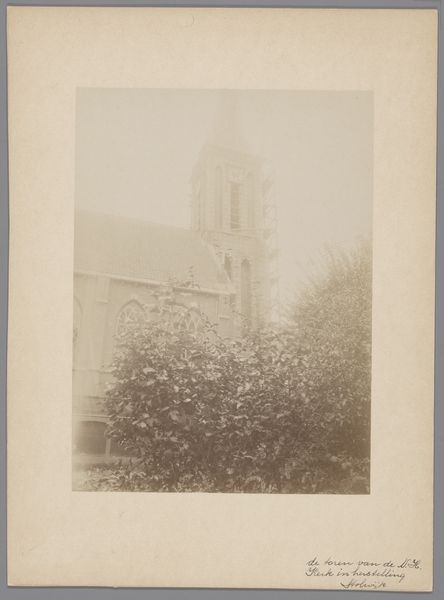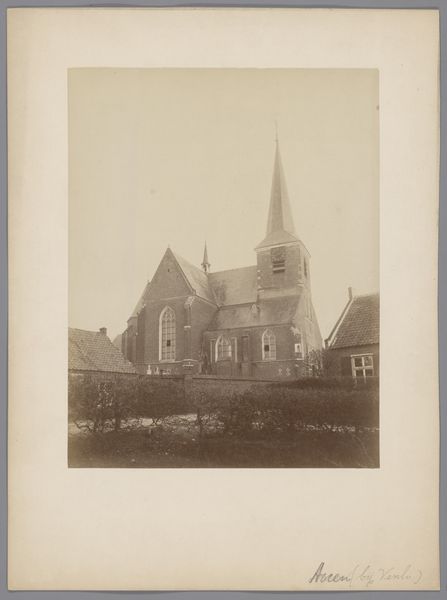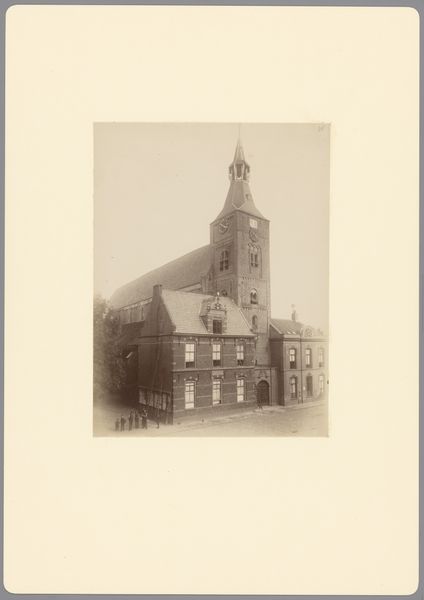
Dimensions: height 233 mm, width 170 mm
Copyright: Rijks Museum: Open Domain
Curator: What strikes you first about this view of the Oude Sint-Nicolaaskerk in IJsselstein? This photographic print is dated sometime between 1880 and 1910. Editor: It's almost ethereal. That tower seems to fade into the overcast sky, giving it this haunting quality, like a phantom structure overlooking the town. Curator: Yes, there’s definitely an atmospheric effect at play. Churches, historically, have often functioned as these anchor points, physically and spiritually, within a community. The height of the tower speaks to aspirations beyond the mundane. Editor: Exactly. Towers visually represent hierarchy – a kind of imposed social order with earthly roots, don’t you think? They symbolize authority, a reach for something that isn't always benevolently intended, yet at other times the protection and power given by god. I mean, what is the cultural context surrounding IJsselstein at this time? Is the town flourishing, struggling? Curator: This image doesn’t directly offer us insight into daily life in IJsselstein, but knowing the broader period, we're seeing growing industrialization across Europe, changes to social and economic systems and increasing debates regarding social justice. These anxieties may subtly manifest here—perhaps in the artist's softened, melancholic depiction. Editor: So it's less about pure documentation and more about feeling? Even in what appears to be a straightforward depiction, there's a layer of emotional and ideological commentary? Curator: Absolutely. Photography in this era was becoming increasingly accessible and utilized for various reasons beyond just recording information, or beautiful imagery. This image almost makes the building look otherworldly. We aren't meant to take it at face value but think more deeply about our spiritual connection to the buildings and society itself. Editor: Thinking about it that way, it almost has an anxiety-provoking aura—we aren't looking at documentation, but how an iconic landmark for the residents looms as a reminder of higher power. A bit heavy, but that gives us more insight than the initial scan shows. Curator: I think it challenges our present way of viewing old photographs as evidence. Instead it becomes a way for us to reconsider cultural and historical symbols, in light of broader socio-political trends. Editor: Food for thought, I'd say. An image isn’t always a neutral, historical object. Curator: Indeed. An evocative echo of a past still whispering to the present.
Comments
No comments
Be the first to comment and join the conversation on the ultimate creative platform.

